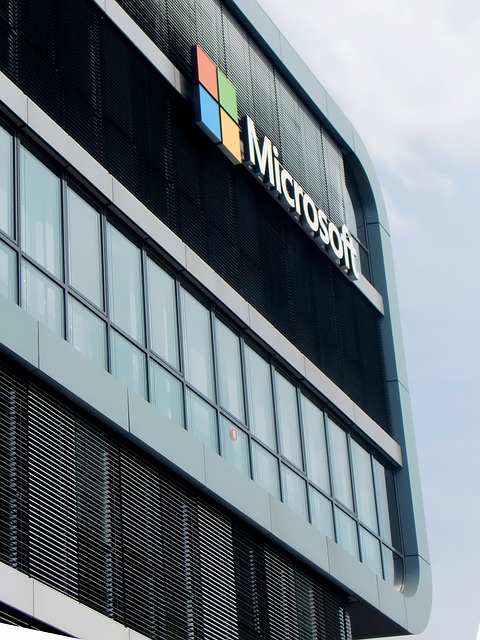The world of computers is on the verge of a revolution about once every ten years or more.
With the advent of mobile and cloud computing in the first ten years of this century, or the commercialization of the internet in the 1990s, there is a growing conviction in the transformative power of new technology paradigms.
The ability of computers to automatically generate words or graphics with the apparent proficiency of a human first came to wider attention with the launch of OpenAI’s ChatGPT late in 2022. For many in the tech sector, 2023 will go down as the year that generative AI revolutionized everything.

Since the release of the iPhone, no single product has sparked such intense expectations for a new era of technology. By the end of the year, the tech industry was racing to integrate generative AI from the lab into a wide range of digital products and services.
When Microsoft CEO Satya Nadella viewed ChatGPT, he compared it to the moment he saw a web browser for the first time thirty years ago. As he put it to the FT earlier this year, “It just clicks that, wow, it is a different day.”
The optimism also carried Google CEO Sundar Pichai, who declared that artificial intelligence—of which generative AI is just the most recent development—will be more significant than electricity or fire.
The impact of generative AI on working patterns is expected to drive a productivity boom across the global economy, according to Erik Brynjolfsson, a professor at Stanford University who has researched the adoption of historically significant new technology.
However, grave concerns over the technology’s applicability have emerged, even as the hype surrounding it has grown.

Generative AI is based on large language models, which deal with probabilities rather than the hard logic of traditional computing systems. These models can write computer code or poetry with astounding artistry at times, but they also have an alarming tendency to return inaccurate information and cause users to “hallucinate” by producing plausible-sounding responses that have little to do with reality.
As the tech industry scrambles to find solutions, some of the companies rushing to implement the technology acknowledge that these intrinsic flaws will restrict its usefulness. “It will be useful, but not as radically game-changing as many people hope,” says Peter Schwartz, head of strategy at Salesforce, one of the software companies looking to incorporate generative AI into many of their products.
In 2024, it should become evident whether generative AI is truly revolutionary, as its proponents suggest, or if it is just a helpful tool for IT professionals with limited uses. The technology has spurred a significant increase in tech stocks, making a few top tech companies this year’s Wall Street darlings, but that success may not last long if generative AI adoption is not well supported.
Wall Street will soon start to demand actual revenue and profits from the technology, following a year in which all tech companies were required to develop a generative AI plan.

“2024 will reveal who is merely playing the AI card instead of having a solid business plan,” says Jim Tierney, an AllianceBernstein growth stock investor.
Boom or boomlet? The optimism surrounding AI has contributed significantly to the shift in sentiment on Wall Street, but it was not the primary driver of the 2023 tech stock price increase.
As hopes for a soft landing in the US economy have increased and growth investments have returned to favor, tech has carried the overall market higher, according to Tierney. The primary drivers of the stock market’s rise were declining interest rates, the stability of Big Tech’s earnings, and positive earnings revisions.
The comeback has been remarkable for the internet giants themselves: the five largest US tech companies, Apple, Microsoft, Alphabet, Amazon, and Meta, have recovered $3.9 trillion in value this year after losing 40% of their total value, or $3.7 trillion, in 2022.
After significant losses the previous year, the five largest US tech companies—Alphabet, Amazon, Meta, Apple, and Microsoft—have recovered $3.9 trillion in 2023.
Supported by an AI frenzy, this rebound was also more directly impacted by one company at the center of the AI boom: Nvidia, whose leadership in producing the chips required to train the newest AI models saw its stock value soar by $800 billion, making it the largest percentage gainer among major tech companies in a record-breaking year.
The surge in investment in the infrastructure required to support AI-powered applications, even before it is evident which applications will be most significant or whether they will yield enough revenue to warrant the expenditure, is reflected in Nvidia’s sales.
The chief executive of AMD, Nvidia’s rival chipmaker, Lisa Su, predicted in December that sales of AI chips for data centers would soar to $400 billion in 2027—a figure equal to the entire global semiconductor market in 2019—a significant increase from her earlier prediction of $150 billion. The tech world is struggling to comprehend the scope of the boom that is unfolding.
According to Tierney, such projections are typical when a new technology is taking off. According to him, “the excitement surrounding AI’s potential is at its peak right now.”
According to PitchBook data, $27 billion in private investment has flowed into AI start-ups in the last year.
Private investment in new AI businesses increased dramatically in 2023, while the scale did not match previous tech booms; according to PitchBook data, $27 billion flowed into private AI startups like OpenAI, which are constructing the huge language models that underpin generative AI.
Bill Janeway, a senior tech investor and former Warburg Pincus partner, describes the surge of generative AI investment as a “boomlet” and “not that big a deal in terms of financing.”
According to Janeway, the lack of a larger AI investment bubble may actually stifle technological growth by reducing the amount of “trial and error” that occurs when cash is tossed around more freely.
A gradual start Following a year in which numerous businesses laid the groundwork for the broader application of AI, investors are now beginning to consider 2024 and accept the likelihood that the technology will be adopted slowly, at least initially.
The software company Adobe, whose shares had jumped nearly 90% since the start of the year, was the latest to disappoint, with a revenue forecast for 2024 that fell short of Wall Street’s hopes. Expectations have been dampened by cautious estimates from some of the tech companies leading the new generation of generative AI.
Microsoft has also worked hard to temper expectations, stating that a pickup in sales from the new “Copilot” features in its software is not probable until the second half of the year. Microsoft has moved faster than most to embed AI into its products.

The persistent problem of large language models producing inaccurate results, undermining their usefulness in many business settings, is one reason to proceed cautiously. According to Salesforce’s Schwartz, “it is a big enough problem and enough people are working on it in parallel” to suggest that solutions will eventually be found.
Specifically, he and others highlight two approaches that provide hope: making sure that whenever generative AI is being used, there is a “human in the loop” to identify errors, and connecting the language models to factual databases so they can provide verifiably accurate solutions when required.
Experts like Janeway predict that a large portion of the value that firms stand to gain from generative AI will come from training the models on their own internal data, which means that a lack of readiness on the part of many potential consumers would also hinder the adoption of generative AI in 2024.
“Most companies do not have mature data capabilities, and if you can not use your data, you can not use AI,” Julie Sweet, chief executive of Accenture, stated in an interview with the Financial Times this month. However, Sweet claims that many businesses lack the technical know-how to implement AI.
The technology’s cost is another factor that may hinder its adoption. In one of the most notable indications of Microsoft’s belief in the potential of generative AI, the company charged $30 per month for the use of the technology in its Office productivity suite. This effectively doubles the software’s price for some users.
The additional monthly cost per user to use Microsoft 365 Copilot, which integrates AI capabilities into Microsoft’s Office productivity suite, is $30.
Analysts caution that clients will confine the technology to small groups of workers until they have convincing evidence of its usefulness. The software company contends that the pricing represents the substantial increases in worker productivity that will come from the program.
These kinds of problems indicate that the revenue and profit boost that new AI products and services will bring to IT companies may be tempered, at least initially.

According to IT research firm Gartner’s chief forecaster, John-David Lovelock, the amount spent on generative AI next year will barely surpass $20 billion, or 0.5 percent of all worldwide IT spending. In contrast, Lovelock notes that IT purchasers will spend five times as much on security.
Accenture’s Sweet informed investors this month that although customer spending on technology is rising, “it is not increasing as fast as it was increasing a couple of years ago.” A significant amount of the money spent on AI is the consequence of consumers “reprioritizing” their present expenditure.
Seeking demand Despite indications that the early adoption of generative AI may be slow, this has not stopped the tech industry’s enthusiasm, as many believe it will become a common tool faster than other significant new technologies. Sweet, for instance, believes that most businesses will likely adopt generative AI more quickly than they did cloud computing.
According to Stanford’s Brynjolfsson, AI benefits from the existing computing and communications networks as well. “Things will happen somewhat faster this time around because the infrastructure is in place,” he adds, comparing it to earlier breakthroughs like the internet.
The macroestimations are encouraging. Goldman Sachs analysts project that, following a modest beginning when investments in AI were less than 0.5 percent of GDP, spending will soar in the later half of this decade to exceed 2.5 percent of GDP by 2032.
Analysts estimate that sales of AI chips for data centers will skyrocket, with a gain in the stock market value of $800 billion for Nvidia, the top manufacturer of chips used in AI, such as the A100 and above.
What is unclear is exactly how and when this will translate into demand for actual digital goods and services, as well as which tech companies stand to gain the most.
According to Oren Etzioni, the former head of the non-profit Allen Institute for AI, which conducts research and engineering, there is not yet a “highly monetized killer app” that could make generative AI a significant source of revenue for consumers. This makes it comparable to the early internet era, when online advertising was scarce and services were mostly provided for free. However, Etzioni predicted that revenue-generating opportunities would flourish rapidly, just as they did on the internet.
The greater opportunity, however, according to many investors, will come from the commercial application of the technology. “It looks like AI will get monetized in the enterprise,” says Kevin Walkush, a portfolio manager at Jensen Investment Management. This would make it an extension of the cloud computing wave, in which numerous businesses have made significant investments to move their IT to the cloud.

Arvind Krishna, the CEO of IBM, said earlier this year that his organization will “pause” hiring back-office personnel because they expected AI to replace many of their roles. The tech companies themselves may be the first to record significant gains from using the technology, reducing their hiring as they adopt generative AI in their own businesses.
“Doing more with less is the new mantra [for tech companies]. From an investor perspective, that is pretty darned welcome,” says Tierney, adding that both Amazon and Microsoft have plans to use generative AI to make their workforces more productive. This could signal the end of the years of rapid headcount growth that constrained an expansion in profit margins.
Early research on the use of generative AI points to potentially rapid business gains; a study co-authored this year at Stanford by Brynjolfsson and colleagues found that call center workers using the technology saw an average productivity increase of 14% in just a few weeks; for workers with the lowest skill levels, the gains averaged 35%.
According to Brynjolfsson, a lot of CEOs have been pressuring their companies to research the best ways to implement the technology because it has the potential to increase productivity. This has resulted in a close focus on how particular jobs may be modified to take advantage of the new AI.
Soon, a lot of employees might see technology for the first time that will enable them to analyze company data, prepare reports, and summarize meetings.
Vice President of Software at Microsoft Jared Spataro says that one of the most remarkable results of Microsoft’s early trials with generative AI has been how “viral” the technology is among employees, who quickly adopt it when they see others around them using it and who do not want to give it up once they have used it in their own jobs.
Although the generative AI revolution will take time to materialize due to the expensive cost of the technology and the lack of clarity surrounding its best integration into daily corporate operations, 2024 may mark the beginning of a new era in work practices.